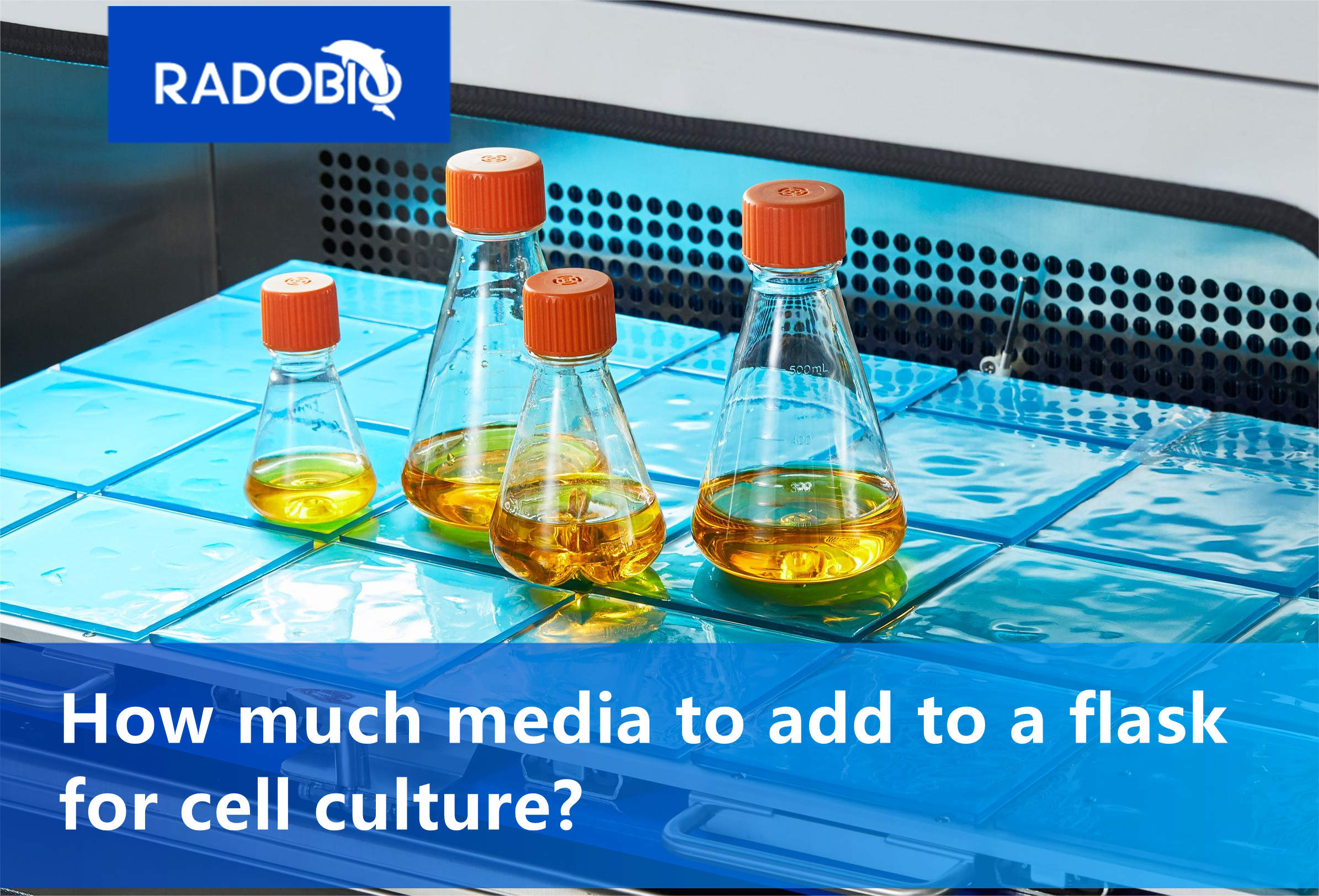How much medium should be added to the flask in a shaking incubator?
RADOBIO sterile cell culture Erlenmeyer flasks are specifically designed for cultivating suspension cells including HEK 293 and CHO cells in a shaking incubator. These flasks feature a flat bottom and a vented cap, making them suitable for small-scale process development, scale-up, and multi-stage cultivation. The vented cap integrates a 0.2 μm hydrophobic membrane, which enables efficient gas exchange while blocking microbial contamination and water penetration, ensuring optimal cell growth conditions
Key Specifications and Usage Guidelines
- 1.Working Volume Optimization
- •Medium volume should be maintained at 20–30% of the total flask capacity to ensure adequate oxygen transfer and minimize shear stress
- •Clear graduation marks on the flask allow precise volume measurement
.
- •Medium volume should be maintained at 20–30% of the total flask capacity to ensure adequate oxygen transfer and minimize shear stress
- 2.Shaking Parameters
- •Recommended incubator shaker shaking speed: 75–120 RPM (adjustable based on experimental needs)
- •For larger flasks (≥3L), reduce speed to 90 RPM to prevent excessive fluid shear and foaming
- •Recommended incubator shaker shaking speed: 75–120 RPM (adjustable based on experimental needs)
Recommended Parameters for CHO & HEK 293 Cells
| Flask Volume | Working Volume | Shaking Speed |
|---|---|---|
| 125 mL | 25 mL | 120 RPM |
| 250 mL | 60 mL | 120 RPM |
| 500 mL | 150 mL | 120 RPM |
| 1000 mL | 350 mL | 120 RPM |
| 1500 mL | 400 mL | 120 RPM |
| 2000 mL | 400 mL | 120 RPM |
| 3000 mL | 800 mL | 90 RPM |
| 5000 mL | 2500 mL | 90 RPM |
Note: Data applies to CHO Stable, CHO Transient, and HEK 293 Transient cell lines
Supplementary Technical Details
- 1.Material and Sterility
- •PETG/PC Material Options:PETG offers high transparency and impact resistance; PC provides superior thermal stability (withstands autoclaving at 121°C)
-
- •Sterilization: Gamma-irradiated, individually packaged, certified DNase/RNase-free, endotoxin-free, and compliant with USP Class VI standards
- •PETG/PC Material Options:PETG offers high transparency and impact resistance; PC provides superior thermal stability (withstands autoclaving at 121°C)
- 2.Design Advantages
- •Ergonomic Cap: Facilitates secure handling and compatibility with pipettes/cell scrapers
- •Baffled Models Available: Enhances mixing efficiency for high-density cultures by increasing oxygen transfer (kLa)
- •Ergonomic Cap: Facilitates secure handling and compatibility with pipettes/cell scrapers
- 3.Critical Usage Notes
- •Avoid Overfilling: Volumes >30% may reduce gas exchange, leading to hypoxia in aerobic cultures
- •Monitor pH/Oxygen: Maintain pH at 7.0–7.4 (CHO cells) and dissolved oxygen (DO) >40% for optimal metabolism
- •Shear Sensitivity: For shear-sensitive cells (e.g., primary T cells), use lower speeds (80–100 RPM) or anti-foam agents
- •Avoid Overfilling: Volumes >30% may reduce gas exchange, leading to hypoxia in aerobic cultures
Applications Beyond Standard Cultivation
- •Perfusion Systems: Integrate with feed lines for continuous nutrient supply, achieving cell densities >20 × 10⁶ cells/mL
- •Microbial Cultures: Suitable for bacterial/yeast fermentation with baffled designs for improved aeration
- •Scale-Up Protocols: When transitioning from flasks to bioreactors, maintain consistent volumetric oxygen transfer rate (kLa) by adjusting agitation and aeration
Post time: Aug-17-2025




